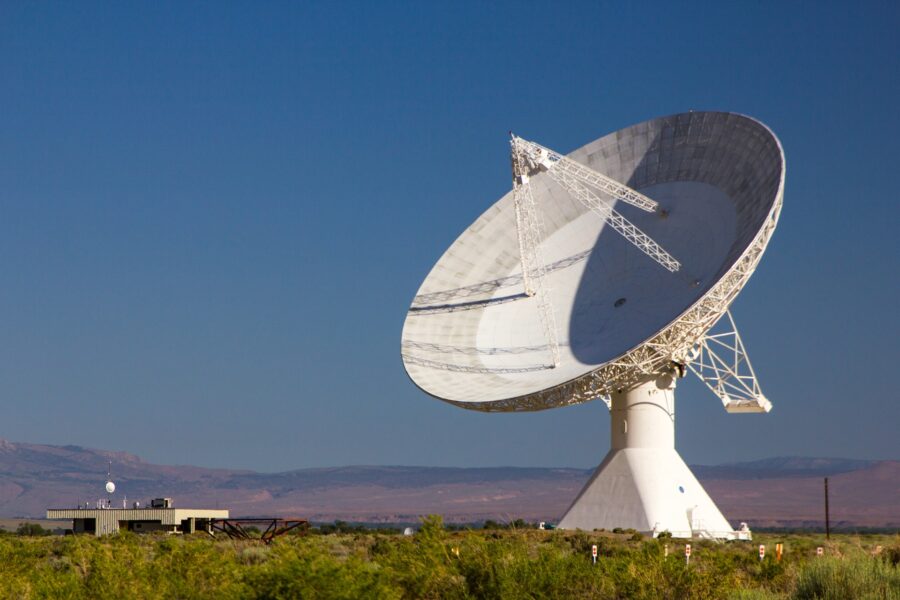Mysterious Radio Waves Are Coming From The Center Of The Galaxy
Scientists are stumped about the strange radio waves coming from the center of our galaxy!
This article is more than 2 years old

In the fifth Star Trek film, released in 1989, there is a Great Barrier in the center of our galaxy, beyond which waits a powerful alien who fools the Vulcan antagonist Sybok (Laurence Luckinbill) into believing he’s God. So far, real life scientists have not said they think it’s this same mischievous entity from Star Trek V that’s currently emitting strange radio waves from the center of the Milky Way galaxy, but whatever it is, it’s apparently just as weird.
In a new study published in The Astrophysical Journal (via CNN), a team of scientists has detected an object — dubbed ASKAP J173608.2-321635 — toward the center of the galaxy and everything about it acts unpredictably, rendering it difficult for astronomers to figure out what it is. Ziteng Wang, lead author of the study, says the signal broadcasting the radio waves switch on an off seemingly at random.
Along with the unpredictability of the radio waves, said Wang, the brightness of the object changes dramatically. He also said the signal has an unusually high polarisation, which means “its light oscillates in only one direction,” however the direction in which the light is oscillating rotates. Study co-author Tara Murphy elaborated more on the object’s unusual behavior. She said that ASKAP J173608.2-321635 started out invisible and undetectable and then “became bright, faded away and then reappeared.” She called this behavior “extraordinary.”
The object was first detected by the Australian Square Kilometre Array Pathfinder radio telescope, and its odd behavior was apparent right away. Murphy said the first signal broadcasting the radio waves was detectable for weeks before disappearing. The team tried and failed to find the signal with the Parkes radio telescope in New South Wales, Australia. They succeeded in detecting ASKAP J173608.2-321635 again with the MeerKAT telescope in South Africa, but this time rather than lasting for weeks, the signal stopped after only a day.

The first theory concerning the radio waves was that it was coming from a pulsar — a compact, dense, and dead star rotating while emitting radio waves. While the team isn’t completely ruling out the possibility, they say the behavior witnessed so far coming from ASKAP J173608.2-321635 doesn’t match what they know about pulsars.
The ways in which we can observe the galaxy around us is changing rapidly, even when it comes to how people without PhDs can view the cosmos from their laptops or smartphones. Last month, for example, NASA introduced a new interactive tool on its website to give visitors a “street view” of the Perseverance rover’s journey across the surface of Mars — not unlike what you could see on Google Maps. It won’t let you detect radio waves from mysterious objects, but if your Uber or GrubHub driver is heading to you from Mars, maybe you can track their progress.
On a more cosmic scale, beyond our own galaxy with its odd radio waves and everything else, in September a study from the Research Institute for Science and Engineering at Waseda University, Japan discovered previously undetected galaxies that were hiding behind dust and other cosmic particles. According to the study, the newfound galaxies came into being during the cosmic dawn, when the stars themselves were first formed.












